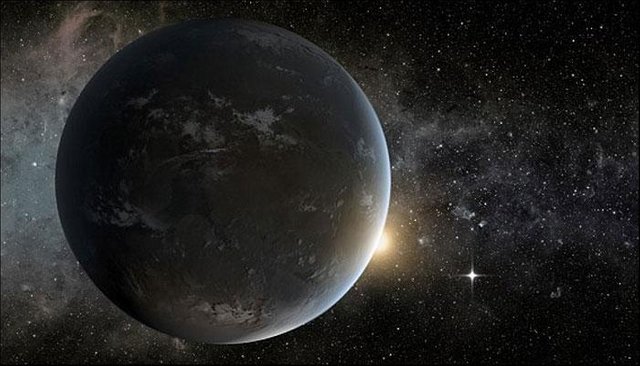Groundbreaking News: Earth-like planet discovered - there is a chance of life!
Ross 128b uses only 9.9 days on a single circuit about its rather cold star. It allows the planet to lie either inside, slightly outside or just on the edge of the potentially habitable so-called gold lock zone.

Just 11 light years from Earth, scientists have discovered a fluffy and earthlike planet that is rapidly approaching us.
Seven-eight million miles from a red dwarf star just 11 light years away, circles a earthlike planet that may well have a climate similar to the one on the planet.
The great discovery has just been published by astronomers affiliated with the European La Silla Observatory in Chile, and comes after more than 10 years of data analysis from a special planetary instrument at the observatory.
The planet, roughly the size of the Earth, has been named Ross 128b and is designated by the European Southern Observatory ESO as the "closest-tempered exoplanet we know of."
The nearest, Proxima b, was discovered last year, and it floats quite close to our nearest star (except the Sun), namely Proxima Centauri about 4.25 light years away.
However, the newly discovered "sister" to Earth can prove to be significantly more interesting than Proxima b.
This is because its mother star is judging by far more calm than Proxima Centauri, which extends regularly and bades its planet environment in deadly ultraviolet light and X-rays.
How to perform the red dwarf star on the planet Ross 128 b after all that does not judge.
Thus, it hardly swings the surface of its planet (or planets) with hazardous radiation, which increases the chance that the Ross 128b has a protective atmosphere, fluid water and maybe life.

As the ESO astronomers say:
However, it requires a definite atmosphere, which researchers have not been able to demonstrate with today's technology.
On the other hand, they find that the Ross 128b will be a very central goal for the world's largest class telescope, the European Extreme Telescope (ELT), from a mountain peak in Chile, expected to hit the gate up to the sky from 2024.
With ELT, it is not only expected to measure whether the Ross 128 b has an atmosphere. It is also estimated that the megatelescope, by means of so-called spectral analyzes, will be able to determine whether the planet's possible atmosphere contains biomarkers, that is, traces of life, including oxygen, water vapor and methane.
In any event, the Ross 128b will become increasingly interesting for future generations.
Together with its red mother star, it is constantly coming closer and closer to the solar system and thus to us.
Such a big hurry is shooting the star in our direction that the "already" in 79,000 years is expected to be our closest star in heaven, except for the Sun.
By comparison, it would take almost 12,000 years to travel to the exciting planet with a spacecraft capable of firing one million kilometers per hour, which is about 20 times faster than today's fastest space probe.
Currently, astronomers have identified about 3,700 exoplanets, ie planets outside the solar system. Of these, less than a slope is considered to be both earthlike and potentially habitable.
However, throughout the Milky Way, calculations can amount to 40 billion earthlike and basically habitable planets.
